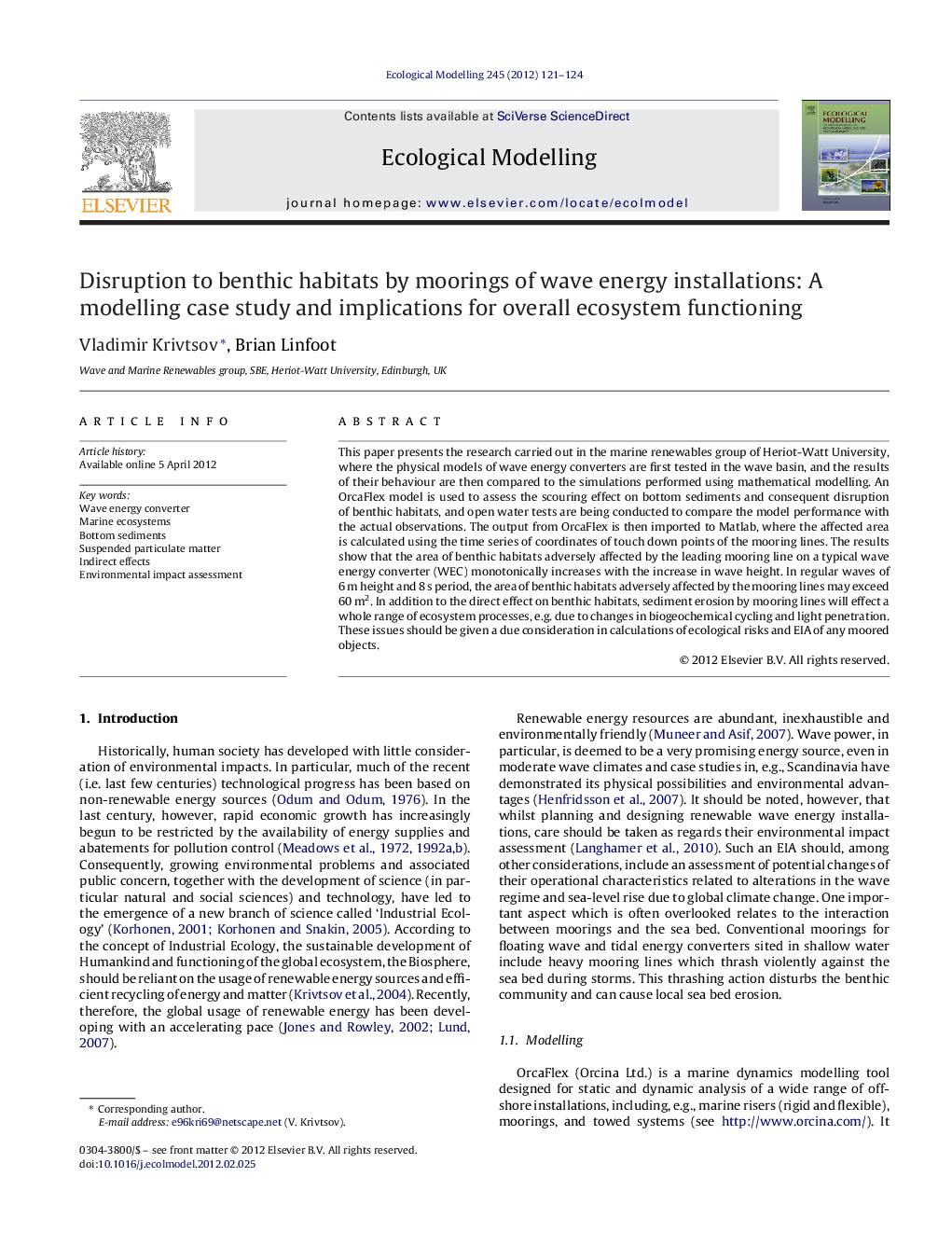| Article ID | Journal | Published Year | Pages | File Type |
|---|---|---|---|---|
| 4376317 | Ecological Modelling | 2012 | 4 Pages |
This paper presents the research carried out in the marine renewables group of Heriot-Watt University, where the physical models of wave energy converters are first tested in the wave basin, and the results of their behaviour are then compared to the simulations performed using mathematical modelling. An OrcaFlex model is used to assess the scouring effect on bottom sediments and consequent disruption of benthic habitats, and open water tests are being conducted to compare the model performance with the actual observations. The output from OrcaFlex is then imported to Matlab, where the affected area is calculated using the time series of coordinates of touch down points of the mooring lines. The results show that the area of benthic habitats adversely affected by the leading mooring line on a typical wave energy converter (WEC) monotonically increases with the increase in wave height. In regular waves of 6 m height and 8 s period, the area of benthic habitats adversely affected by the mooring lines may exceed 60 m2. In addition to the direct effect on benthic habitats, sediment erosion by mooring lines will effect a whole range of ecosystem processes, e.g. due to changes in biogeochemical cycling and light penetration. These issues should be given a due consideration in calculations of ecological risks and EIA of any moored objects.
► OrcaFlex and a Matlab script was used to simulate a WEC and the resulting disturbance of bottom sediments. ► Simulations were performed for regular and irregular wave regimes. ► This is the first published estimate of the affected area of benthic habitats. ► Sediment erosion by mooring lines will effect a whole range of ecosystem processes. ► These issues are important in calculations of ecological risks of any moored objects.
